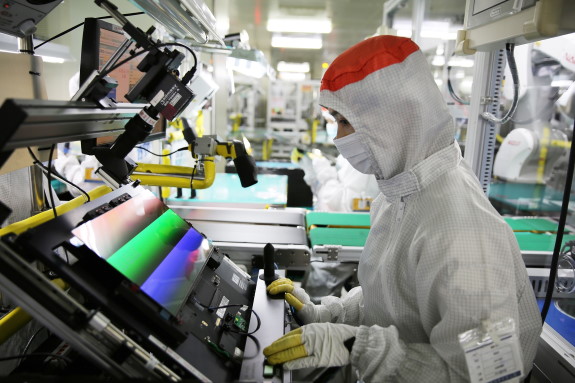
Posted on Thursday, January 21 2021 @ 11:38 CET by Thomas De Maesschalck
Samsung has created world's first OLED laptop screen with a refresh rate of 90Hz. According to the South Korean giant, this panel offers performance on par with that of a 120Hz LCD panel. The first laptops with 90Hz OLED panels are expected later this year. Volume production of 14-inch panels starts in March.
While most laptops and notebooks now offer a 60Hz refresh rate, Samsung Display announced today that it will mass produce the world’s first 90Hz OLED laptops in the first quarter of this year.
Samsung Display Chief Executive Officer Joo Sun Choi said that the company will initially produce very large quantities of 14-inch, 90Hz OLED displays destined for laptops and notebooks, beginning in March.
“OLED display panels can best satisfy the diverse consumer needs for laptops used in telework, online education, video streaming, and gaming,” the company said.
Samsung Display said it is helping to introduce a major shift in the market as it collaborates closely with global manufacturers to achieve a new level of excellence for refresh rates in laptops, beginning this year.
Samsung Display believes consumers will quickly warm to the opportunity to purchase OLED displays offering a 90Hz refresh rate, even though the OLED panels require the use of a high-spec. graphics card. In rendering static images 90 times a second, they will make movements look much more lifelike, or snappier, from a color perspective. As such, the new refresh rate updates changes in motion more often, allowing for smoother-looking visuals that appear virtually seamless to the viewer.
In a seeming contradiction, OLED displays are able to transition from one screen to the next much more quickly than LCD screens with the same refresh rate. As a result, OLED screens can make gaming and movie watching a more vibrant, pleasurable experience, without compromise. Their 90Hz OLED refresh rate is actually 10X the fastest screen response time on the market today. In fact, the 90Hz OLED display offers high-speed driving that is actually on par with that of 120Hz LCD screens.
Samsung Display tested blur length using the same motion picture of a fast driving car and found that the image drag of 90Hz OLED and 120Hz high refresh rate LCD screens is 0.9mm and 1mm, respectively. In short, 90Hz OLED screens smear amazingly little, at practically the same rate as a 120Hz LCD.

